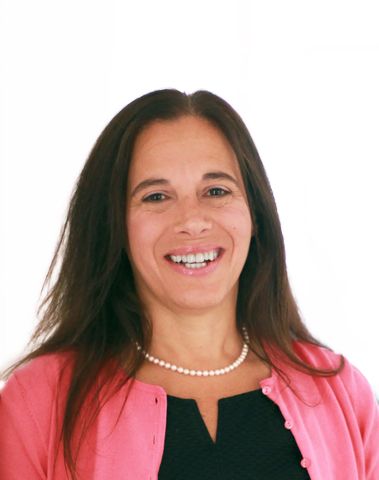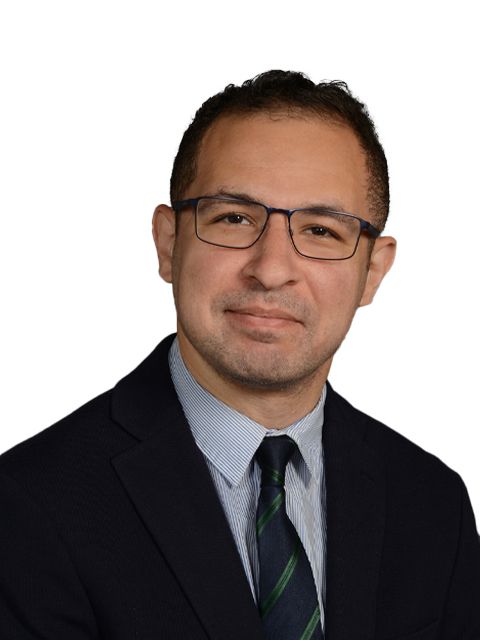Dr. Susan Pannullo, professor of clinical neurological surgery, considers it an honor and duty to support the next generation of neurosurgeons and help them reach their personal and professional goals. She met a like-minded mentee, Dr. Mohammed Fouda, fellow in neurological surgery. Both doctors have a keen interest in advancing neurosurgical technologies and team up to improve patient outcomes. Enterprise Innovation asked the duo to share their mentorship experience and innovative collaborations.

Dr. Susan Pannullo (Provided)
Can you please give us some background information on your research and innovations?
DR. PANNULLO: Dr. Fouda and I work together with teams of biomedical engineers on neurotech innovations.
DR. FOUDA: Dr. Pannullo and I are developing an innovative cranial distractor, a small bioresorbable device that helps to expand the skull by slowly growing pieces of bone apart, for children whose skull bones have fused too early in development, a condition known as craniosynostosis. As a result of the premature fusion, the skull can be misshapen to accommodate the growing brain after birth. Syndromic craniosynostosis constitutes 15 percent of all cases of craniosynostosis in children. In such cases, surgical intervention aims to expand the volume of the skull, reduce elevated intracranial pressure (ICP), protect the orbital contents, and restore normal shape to the skull and face. Distraction osteogenesis (DO) is an important treatment option facilitating bone formation between bony segments that are separated through controlled traction.
Currently available posterior cranial vault distraction devices require external activation ports protruding through the skin, leading to communication from the subgaleal space to the external environment. Additionally, existing cranial distractors need to be removed surgically once the procedure is complete. Despite their mechanical efficacy, these systems are fraught with complications such as infection, device protrusion through the skin, and the need for subsequent surgery to remove the device, causing apprehension for both parents and surgeons in utilizing this treatment approach.
Our new device has the potential to make distraction safer and less costly. This is the first distraction system to use a wrap spring clutch-like mechanism to generate linear movement between two bone segments. The magnet in the activator repeatedly raises and lowers the lever to create small, discrete separations between the bones that add up to the desired distance for each session, eliminating external activation ports and manual manipulation. Another advantage is that the system is constructed with bioresorbable materials, which eliminates the need for removal with a second surgery.
This new, high-performance and cost-effective craniosynostosis treatment can minimize the risk of complications, reduce costs and improve the overall quality of life for patients. The total market size for distraction osteogenesis devices is expected to be $289.3 million by 2032, and we are hoping to gain a market share of $84 million.
Can you tell us how your mentor-mentee relationship started? What are some other projects, especially innovations, you’re working on together?
DR. PANNULLO: Dr. Fouda approached me after doing research at several top-notch institutions. He was interested in neurosurgical innovation opportunities and the timing was right. He joined me in 2022, and we began the process of collaborating on a variety of existing and new projects.
DR. FOUDA: From our initial interactions, it became evident that Dr. Pannullo embodies the ideal mentor for my current stage of academic neurosurgical training.
My professional interests lie at the intersection of neurosurgical oncology, innovation, and medical device development, with a strong belief in the interdisciplinary collaboration between neurosurgery and biomedical engineering. The contemporary landscape of neurosurgery is heavily influenced by technology, underscoring the importance of integrating technological advancements into our practice.
My fellowship at Weill Cornell Medicine has been fulfilling as it aligns perfectly with my passion. Currently, I am involved in over 12 projects under Dr. Pannullo’s guidance, spanning various areas including neurosurgical oncology, medical education protocol enhancement, and medical device innovation. One notable project entails the design of an external cranial prosthesis tailored for traumatic brain injury (TBI) patients who have undergone surgery to relieve intracranial pressure prior to follow up surgery to repair the skull. This prosthetic solution can protect the brain until the skull is healed for individuals with skull bone defects, particularly catering to the needs of military personnel and patients in low and middle-income countries. Additionally, we are conducting a comprehensive review of our institutional data to discern the disparities between sporadic and radiation-induced meningiomas, usually benign tumors.
Through these endeavors, we aim to contribute meaningfully to the field of neurosurgery, advancing both patient care and scientific understanding. Working alongside Dr. Pannullo has been an invaluable opportunity to translate my academic interests into tangible contributions to neurosurgical practice.

Dr. Mohammed Fouda (Provided)
Why is it important to have a mentor not only in research but in innovation and entrepreneurship? What have you gained from the mentoring experience?
DR. FOUDA: I consider myself fortunate to have Dr. Pannullo as my mentor. In academic neurosurgery, proficiency in surgical skills alone is insufficient; additional attributes are required to excel as an academic neurosurgeon. In the past two years, I have prioritized not only advancing my medical and surgical expertise but also nurturing personal growth. Dr. Pannullo taught me that essential qualities such as mentorship, teaching abilities and the capacity to impart knowledge to the next generation are fundamental skills.
Learning from her has equipped me with the skills necessary to become an effective mentor to younger generations. While this may seem straightforward, in reality, it is a nuanced and challenging endeavor.
I have also gleaned invaluable insights about entrepreneurship and innovation. She has taught me the importance of creativity, lateral thinking, strategic planning and becoming a strategic partner, which complements analytical thinking. In neurosurgery, even a minor oversight could have dire consequences for a patient's life. Conversely, innovation necessitates a mindset that embraces experimentation and learning from failures. Dr. Pannullo has played a pivotal role in guiding me to discern the distinctions between these mindsets.
Why did you choose to become a mentor? What have you gained from your mentoring experience?
DR. PANNULLO: I have a longstanding commitment to mentorship in the innovation space because that relationship breeds the most impactful and meaningful outcomes.
I have learned that my mentees have fresh ideas and that I need to listen to them when they approach a problem in a novel and “disruptive” way.
Many Weill Cornell Medicine physicians and scientists maintain relationships and collaborate with external organizations to foster scientific innovation and provide expert guidance. The institution makes these disclosures public to ensure transparency. For this information, see profile for Dr. Susan Pannullo.

